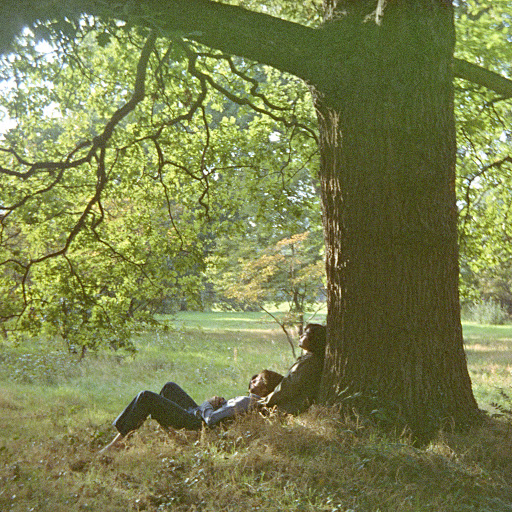Back in 1967, the pioneering conceptual artist Yoko Ono had an idea. Invited to put together a show in Berlin, she imagined a band on a stage – only, not a real band. There would be no guitars, no drums, in fact there wouldn’t even be any people. “Instead of each member of the band being human being,” she recalls amongst the extensive interview material preserved in the book accompanying this new edition, “there would be a plastic box with a mechanism or robot inside that would perform or play an instrument or a tape recording.”
A few months previously, she had met a British musician at the Indica Gallery in London and by the end of the decade they were married. It was Lennon who took up Ono’s idea of a band made of plastic, hammering together a chunk of wood and a tape box and a paperweight and calling it The Plastic Ono Band. But the germ of the idea was Ono’s. It embodies many of the contradictions surrounding the group the pair created at that time: a group prone to quoting Marshall McLuhan and emphasising their own ‘plastic’, commercial nature that also sought to be as raw and unvarnished as possible; a band whose actions seemed oblique and obscure to much of their audience, who’s stated goal was always the maximum of transparency.
The Plastic Ono Band were always a group of two halves, a fact embodied in singles featuring John’s tracks on one side (always the A side) and Yoko’s on the other, and in the dual release of their first album, which was really two albums, with almost identical jackets: one by John Lennon/Plastic Ono Band and the other by Yoko Ono/Plastic Ono Band. Only one of the two sides to the group was able to fully embody and express that strange and contradictory nature. Ono’s role in the musical currents of the late 60s and early 70s has consistently been marginalised – and continues to be marginalised in this ‘Ultimate’ collection (even as she herself presided over it as producer and creative director). We are treated to no less than seven discs of Lennon yelling into a mic, tuning his guitar, and jamming out standards like ‘Hound Dog’ ‘Johnny B. Goode’, and just one – relegated, bizarrely, to a DVD so you have to listen through your telly – is given over to Ono’s own sessions performing with the band.
But what an extraordinary disc that turns out to be.
Opening tracks ‘Why’ and ‘Why Not’ bringing the avant-garde extended vocal techniques of singers like Joan LaBarbara and Cathy Berberian to the pub band set-up of Lennon, Ringo, and Klaus Voormann and it sounds like she’s literally conducting the players with her vocal cords, channelling bolts of energy into the room and urging the players on to ever wilder and freer heights. On several of the tracks here you can feel, viscerally, the tension between the cosmic psychedelia of Ono’s vocals and the jobbing trad rock riffs churned out by the band. At times, these tensions seem to burst open and the whole thing sort of disintegrates, as though the very fabric of the rock discourse were coming apart at the seams. Elsewhere, players and singer come together in startling new ways, promising entirely new genres of music that would have to wait for later groups like Los Angeles Free Music Society or Teenage Jesus and the Jerks to find their full expression. And then there are the moments of tender, pastoral beauty, like ‘Remember Love’, which could almost be a great lost Mo Tucker/Velvet Underground track, and the baroque lullaby ‘Who Has Seen The Wind?’ It was almost worth sitting through seven discs of Lennon noodling, just for the joy that these two songs bring.


